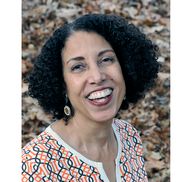
By Jeanne Fox-Alston, Newspaper Association of America (pictured below)
June 2005
When Richard Prince recently scooped other media in reporting that The New York Times Company plans to start a black newspaper in Gainesville, Fla., it was another example of the dogged, leave-no-stone-unturned coverage that loyal readers of his Journal-isms column have come to expect. Fusion recently talked with Prince about his column, which appears three times a week on the Maynard Institute Web site.
 How did the column begin?
How did the column begin?
It started at [the publication for] NABJ around 1991and ran until 1998.
Then Dori Maynard [president of the Maynard Institute] asked me if I wanted to do something for the Maynard Web site. I said yes, and so picked up the column again in 2002.
What’s the goal?
To report on news involving diversity issues in the news media, and journalists of color.
Do you ever worry about finding enough information for each column?
I always have plenty of information. The issue is whether I have something that will be a good lead. I’ve been putting more information in briefs at the end, just because there is so much information.
What else do you do beside write Journal-isms?
I work on the foreign desk of The Washington Post as a part-time copy editor. I edit the Black College Wire, a project of the journalism faculty at historically black colleges. That’s a news service that attempts to increase the frequency of the student publications by getting them online and to improve the quality of those papers, too.
I can’t think of anyone better to write this column. Do you agree?
It is unique to me because I’m able to draw upon all the various things I am involved with and have been involved with. For example, some information comes from the NABJ Listserv, some comes from the Trotter Group [organization of African American columnists]. Some comes from the National Conference of Editorial Writers. Some I pick up from my work at The Washington Post, and a lot of things come from readers and news sources.
Why do you find writing the column rewarding?
A columnist always likes to be able to help set the agenda for readers.
Do you get much reaction?
We have a message board on the Web site, and I have a loyal group of people who regularly give me feedback. You never know what will strike people’s fancy or interest. For instance, [recently] on the NABJ Listserv they were commenting on a brief that I did on Juneteenth being celebrated in Wisconsin. I said it was a state not generally
known for Juneteenth celebrations. Well, someone from Wisconsin took issue with that.
That prompted a discussion about which parts of the black community have celebrated Juneteenth and how well known it is. That’s the last thing I expected to prompt a discussion. But it ended up educating all of us.
The column with the most hits was on Elvis Mitchell commenting on why he was leaving The New York Times. He was one of the few black film critics at a mainstream newspaper and quit when someone was promoted over him and it was presented as a fait accompli. The reason why it generated the most hits was because it was picked up by a lot of the white-oriented web sites, Romenesko in particular. So a lot of people who don’t normally read the column weighed in.
Another thing that got a tremendous amount of feedback on the message board, which I never thought would, was the decision by Time Inc. to fold Suede magazine. That was six months ago. People are still posting items about how much they loved the magazine and how it was unique because it was a multicultural fashion magazine. The whole issue of black ownership of publications always gets people’s attention, such as Essence being sold to Time Inc.
How many hits does the column receive?
It’s usually about 1,600 to 1,700 a day. We would love to have more. That’s one of the challenges, getting it better known.
Who are the readers?
I think it is mostly people of color because it is linked to the Web sites of all of the journalism associations of color, among others. Also, [it’s read by] a lot of white journalists who are interested in diversity issues or things that don’t get mentioned on the Web sites produced by others.
For instance, they can read about the [recent] NAHJ convention or UNITY decision [regarding the location of the 2008 convention]. Those are things that you don’t see on other industry Web sites. And if people are serious about relating to journalists of color, getting more in newsrooms, or even on the business side, it would probably pay for them to keep in touch with what’s on their minds.
How are people of color are faring in news business?
People are still frustrated, but there are a lot of people just doing their job who don’t say much. Those who are vocal seem frustrated by the lack of progress.
Are you one of the activists?
Yes, just by doing the column. Also by being involved in all of these organizations.
I come from the generation of journalists who takes all of this seriously. I believe there is a role for people of color in
journalism, that people can express themselves without having to compromise themselves. They have valid things to say that can only benefit news organizations.

